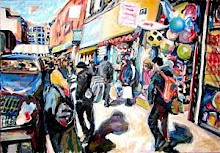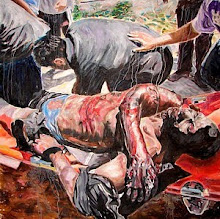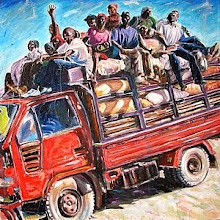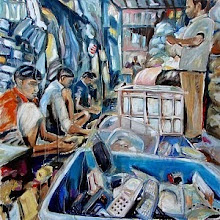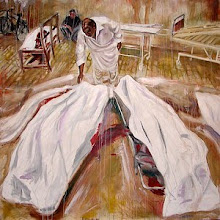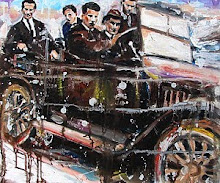
Rabbi Loew's Golem
(wikipedia.org)
The Golem in Jewish folklore
In Jewish folklore, a golem (גולם, sometimes, as in Yiddish, pronounced goilem) is an animated being created entirely from inanimate matter. The word golem is used in the Bible to refer to an embryonic or incomplete substance: Psalm 139:16 uses the word "gal'mi", meaning "my unshaped form" (in Hebrew, words are derived by adding vowels to triconsonantal roots, here, g-l-m). The earliest stories of golems date to early Judaism. Adam is described in the Talmud (Tractate Sanhedrin 38b) as initially created as a golem when his dust was "kneaded into a shapeless hunk". Like Adam, all golems are created from mud. They were a creation of those who were very holy and close to God. Early on, the notion developed that the main disability of the golem was its inability to speak. It is said that if a golem were made able to speak, that would give it a soul, and—because a golem cannot be made perfectly—that ability could make it very dangerous.
http://en.wikipedia.org/wiki/Golem
The Golem paradox
There is, then, a profound paradox in the basic attitude to the Golem in so far as he is made in the image of man who is himself made in the image of God. Accordingly, the Golem both resembles his human creator and yet fundamentally lacks his creative power (that is, the yetser which expresses itself in imaginative projects, speech and sexual desire). The Golem is incapable of producing more Golems.
Richard Kearney The Wake of Imagination (p 58)
The myth of the Golem is a good example of anti-nature ideology. The project to usurp the role of mother symbolically was a failure. Since the Golem is 'made in the image of man who is himself made in the image of [a patriarchal] God', i.e. not born of woman, it is not surprising that it cannot speak [no soul] and lacked sexual desire. Even though it was made from mud the golem held a privileged position over female creations [e.g. Adam was created as a golem (made from the dust of the ground which in Hebrew is adamah), Eve was made from a rib taken out of Adam]. A standard feature of golems in popular culture is that of uncontrollable violence and killing its creator. Thus the golem becomes violence purified, a figure that is not human, therefore having no empathy with humans. Frankenstein could be considered a modern version of the Golem, a criticism of the negative or anti-human aspects of modern science and technology and its potentially disastrous consequences for the whole human race.
Frankenstein, or, The Modern Prometheus
Frankenstein, or, The Modern Prometheus is a novel written by the British author Mary Shelley. Shelley wrote the novel when she was 19 years old. The first edition was published anonymously in London in 1818. Shelley's name appears on the revised third edition, published in 1831. The title of the novel refers to a scientist who learns how to reanimate flesh and creates a being in the likeness of man out of body parts taken from the dead. In modern popular culture, people have tended to refer to the Creature as "Frankenstein" (especially in films since 1931). Frankenstein is a novel infused with some elements of the Gothic novel and the Romantic movement. It was also a warning against the "over-reaching" of modern man and the Industrial Revolution, alluded to in the novel's subtitle, The Modern Prometheus. The story has had an influence across literature and popular culture and spawned a complete genre of horror stories and films. The novel raises many issues that can be linked to today's culture. These issues include the evolution of man and whether technical progress can be self-destructive. Frankenstein is in some ways allegorical. The novel was conceived and written during an early phase of the Industrial Revolution, at a time of dramatic advances in science and technology. That the creation rebels against its creator can be seen as a warning that the application of science can lead to unintended consequences.
http://en.wikipedia.org/wiki/Frankenstein




